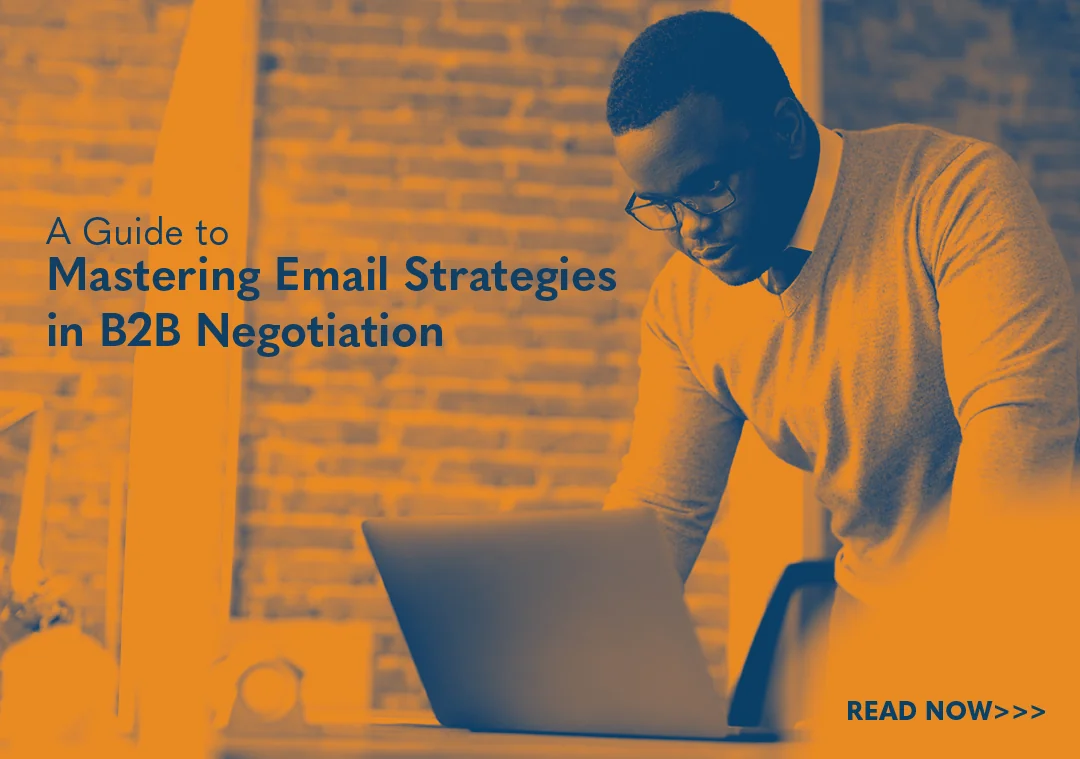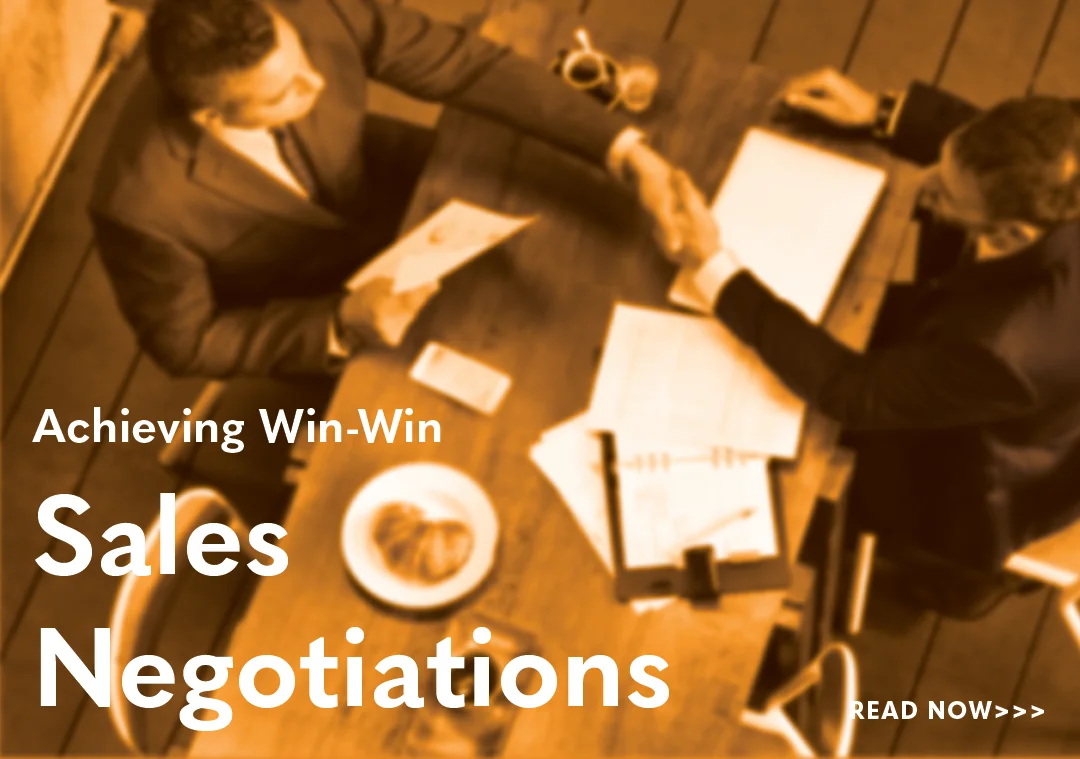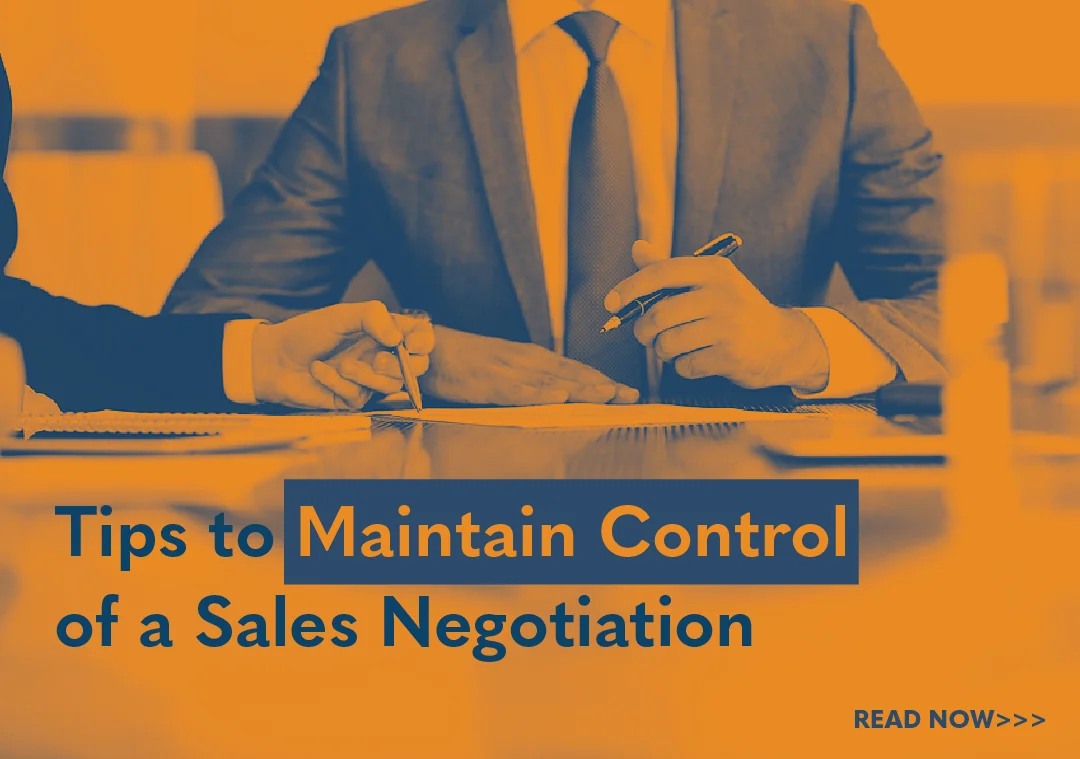A Guide to Mastering Email Strategies in B2B Negotiation

Though email has been around for more than 25 years, it remains a staple of B2B communication. It is vital for engaging customers through marketing campaigns, keeping prospects engaged in the sales process, and building and maintaining relationships. It’s also an essential tool for negotiations, crucial to conveying value and reaching agreement.
While face-to-face negotiation is best, it isn’t always possible. And with multiple decision makers, scheduling videoconferences and phone calls can be cumbersome. This makes email the next best option. However, email negotiation requires a finesse beyond daily use. Sellers need a strategic approach to presenting agreeable terms that align needs and close deals. Here, we’ll examine email negotiation strategies that achieve win-win outcomes.
Understanding Email in B2B Negotiations
Today, with smart phones, email is always available, making it the principle means of communication. And email’s asynchronous accessibility is ideal for reaching customers anywhere in the world, regardless of time zone.
Also, more than face-to-face or phone interactions, email provides documentation. It maintains an ongoing record of what has been said, who said it, and when. In negotiation, this is vital for tracking objections and agreements, so buyers and sellers stay updated.
Of course, with overcoming objections and closing mutually beneficial deals, negotiations are exciting. And though email can lengthen the process, it also heightens awareness. This intense concentration can spark creativity and fuel momentum, in both sellers and buyers. However, email negotiation also presents unique challenges.
Challenges of Email Negotiation
For starters, according to the Harvard Business Review, 50% of email negotiations end in a stalemate. This is compared to only 19% for face-to-face negotiations. Plus, in addition to slower responses, email negotiations are less personal and more prone to misunderstandings.
Research by Creighton University goes further. They note that email negotiators tend to be task oriented, relying on the logical presentation of facts. This can be a disadvantage when appealing to emotion. In addition, bundling arguments, common in emails, can create information overload.
The Creighton study also shows email can increase contentiousness, disagreement, and blame. This can quickly derail a negotiation, which requires continuous alignment of needs and agreement. Further, sellers must guard against diminished returns of:
- Sharing
- Cooperation
- Privacy
- Trust
- Commitment
- Investment
- Focus
While this can seem like a long list of negatives, understanding these deficiencies enables sellers to be proactive. They can take the steps necessary to reduce their effect on negotiations.
Turning Challenges Into Opportunities
Here, let’s examine how sellers can turn these challenges into opportunities. Consider the following:
Participation: To offset a decrease in sharing, invite participation, such as addressing specific parties or departments by name. For example, “It would be beneficial to review distribution figures. Maybe Sam can include these in your follow up.”
Bundling: Bundling information encourages cooperation in email. But the Creighton study cautions against “over bundling” or addressing too many concerns at one time. Instead, limit the number of action items requiring immediate attention. And be sure to note what’s needed and who needs to do it.
Cooperation: The Creighton study shows email can increase competitiveness and reduce cooperation. However, email also boosts the exchange of information and participation, a critical component of cooperation. Without cross-organizational collaboration, the average negotiation time was 12-18 months. With it, this drops to eight weeks.
Slow but Steady: Not surprisingly, email negotiations take longer. However, because it’s asynchronous, it also prevents ill-timed responses. In this, recipients can avoid impulsive declarations. Also, as email requires a long game, sellers can resist the impulse to rush or make hasty concessions.
Empathy: The Creighton research shows email can reduce unconscious bias, and negotiators who show empathy are more trusted. In emails, take the time to express empathy with the buyers’ needs and pain points. This requires extra attention when sellers lack eye contact and the ability to read body language.
Humor: For many sellers, humor is vital to building rapport and generating trust. Creighton notes that while humor can increase trust in emails, sellers must be careful. In emails, humor can also be misunderstood and misinterpreted. This does not mean sellers should avoid it. However, they must note their relationships and consider all parties CC’d and BC’d.
Multimedia: According to the Creighton study, email negotiators ask fewer clarifying questions than face-to-face negotiators. However, they also note multimedia, such as charts and graphs, can be an advantage. Use these to illustrate essential information, such as potential ROI.
Level the Playing Field: In addition, a home field advantage in negotiations has been observed. Parties on their home turf can expect 60% to 160% more value over visitors. Thus, email levels the playing field, ensuring equal comfort and fostering win-win outcomes.
Key Components of Effective Email Strategies in B2B Negotiations
In addition, there are several essential components of successful email negotiations. These include:
Earned Attention: Email can limit attention spans. This is especially true when senders neglect basic principles, such as avoiding big blocks of text. We’ll address essential writing tips below. However, email communication should be direct and earn the reader’s attention. Consider the following:
- Be succinct
- Avoid jargon
- Keep writing clear and purposeful
Emails should have clear objectives. Typically, these include requests, proposals, or concerns. Thus, they should follow a local structure to maintain attention and encourage thoughtful reading over skimming.
Personalization: Today, personalized marketing is essential to attract customers and generate interest. In fact, according to McKinsey, 71% of customers expect personalized interactions. And 76% feel frustrated without it.
This must extend to email negotiation, where sellers seek to close deals on favorable terms. Consider:
- Using recipients’ names
- Adapting to preferences
- Referencing previous discussions
- Addressing specific needs, challenges, and objectives
- Mirroring the buyer’s language
By personalizing emails, sellers demonstrate commitment, which allows value propositions to resonate.
Balance Both Buyer and Seller Needs: Of course, all negotiations are a give and take. In email negotiations, this requires greater preparation. However, research shows the following:
- 85% of negotiators don’t establish the buyer’s needs upfront.
- Only 51% of sales negotiators consider their own essential needs.
- Merely 26% of sales negotiators know their questions in advance of meetings.
In many ways, the slower pace of email benefits this preparation. Sellers should remember these keys:
- Understand the buyers’ needs, must haves, and ideal wants
- Know your own ideal outcomes and concessions
- Strategize your questions
In these, email can ensure negotiators are better prepared than their face-to-face colleagues.
Value Through Content: Sharing relevant content keeps buyers engaged and provides continuous value through the negotiation process. This includes:
- Blogs
- Case studies
- Testimonials
The Content Marketing Institute shows the value of case studies and testimonials. They note 51% of B2B marketers cite these as the most effective forms of content.
In negotiations, sellers must strategize content distribution. This requires the right content for each decision maker at the right time of their buying journey.
Timing: Timing is critical in negotiations. And once again, we see how the slower pace of email can be a benefit. Sellers should consider:
- Prompt and responsive communication
- Acknowledge receipt of emails before a reply
- The time they need to write, revise, and edit
- Updates or responses to inquiries
A potential pitfall of sales negotiations can be a tendency to rush. Of course, this is understandable, especially as deals seem more and more likely. However, use the additional time email provides to your advantage. Take the time for considered and deliberate responses. This can include a quick thank you and note on status rather than rushed replies.
Follow-Up: Follow-ups in negotiation should maintain engagement and momentum. However, in email, this requires a strategic cadence that includes:
- Updates and reminders
- Occasional phone calls
- Periodic videoconferences
As email can be the least personal of sales communication, it helps to augment with phone and video. These can add the personal touch needed to maintain relationships and gauge interest, engagement, and buy-in.
Overcome Objections: Objections are a necessary component of negotiations. Rather than impediments, treat them as opportunities to address concerns, ensure alignment, and gain buy-in. In email, consider the following:
- Anticipate objections
- Proactively address concerns
- Provide testimonials and case studies
Active listening and empathy are essential in all sales engagements. In email negotiations, this requires careful reading. Remember, buyers may or may not be skilled writers. Try to discern the root of their objection and, if needed, always seek clarification.
Call to Action: Every email in the negotiation process should conclude with a call to action or CTA. These state what needs doing, who needs to do it, and prompt the next steps. This includes:
- Scheduling calls
- Arranging product demonstrations
- Finalizing contract details, including signatories
CTAs should be specific, actionable, and easy to follow. But even more than guiding the process, use these to express enthusiasm. Consider the difference between “Sign the contract” and “Looking forward to the contract and getting this started!”
Email Negotiation Best Practices
Best practices for email negotiations include starting with an initial in-person or video call to establish rapport. Follow-up email responses should be prompt, but not immediate, to allow time for thoughtful consideration. Personalizing communication helps build a connection, and explicitly stating emotions can prevent misunderstandings. Finally, incorporating periodic phone or video calls can help maintain a personal touch and foster trust.
Email Writing Tips
It goes without saying that emailing clients involves deliberate structuring to ensure clarity and coherence:
- Utilize bullet points for easy readability and organization of information.
- Keep sentences short, ideally 20 words or less. And maintain concise paragraphs of 3-5 lines to hold the reader’s attention.
- Use paragraph spaces to enhance clarity and readability. Reading emails aloud before sending can help catch errors and awkward phrasing.
- Additionally, enlisting secondary readers for proofing can provide valuable feedback and ensure your message is clear and error-free.
Conclusion
For most sellers, negotiations are the fun part of the sales process. There’s the excitement of finally seeing the conclusion to an often long journey.
As we’ve seen, email negotiations present their own unique challenges. But the pandemic and quick shift to virtual selling taught us today’s challenges are often tomorrow’s opportunities. And this holds true with email negotiations. We hope this helps sellers craft more effective emails and achieve more win-win outcomes.
For additional information, download our white paper The Ultimate Guide to Sales Negotiations.

- Account Planning (11)
- Awards (49)
- Client Testimonial (37)
- Personal Branding (19)
- Podcast (11)
- Research (70)
- Sales Career Development (87)
- Sales Coaching (156)
- Sales Consulting (137)
- Sales Culture (170)
- Sales Enablement (354)
- Sales Leadership (109)
- Sales Management (248)
- Sales Negotiation (16)
- Sales Prospecting (125)
- Sales Role-Playing (18)
- Sales Training (235)
- Selling Strategies (263)
- Soft Skills (70)
- Talent Management (94)
- Trusted Advisor (27)
- Virtual Selling (49)
- Webinar (9)


























